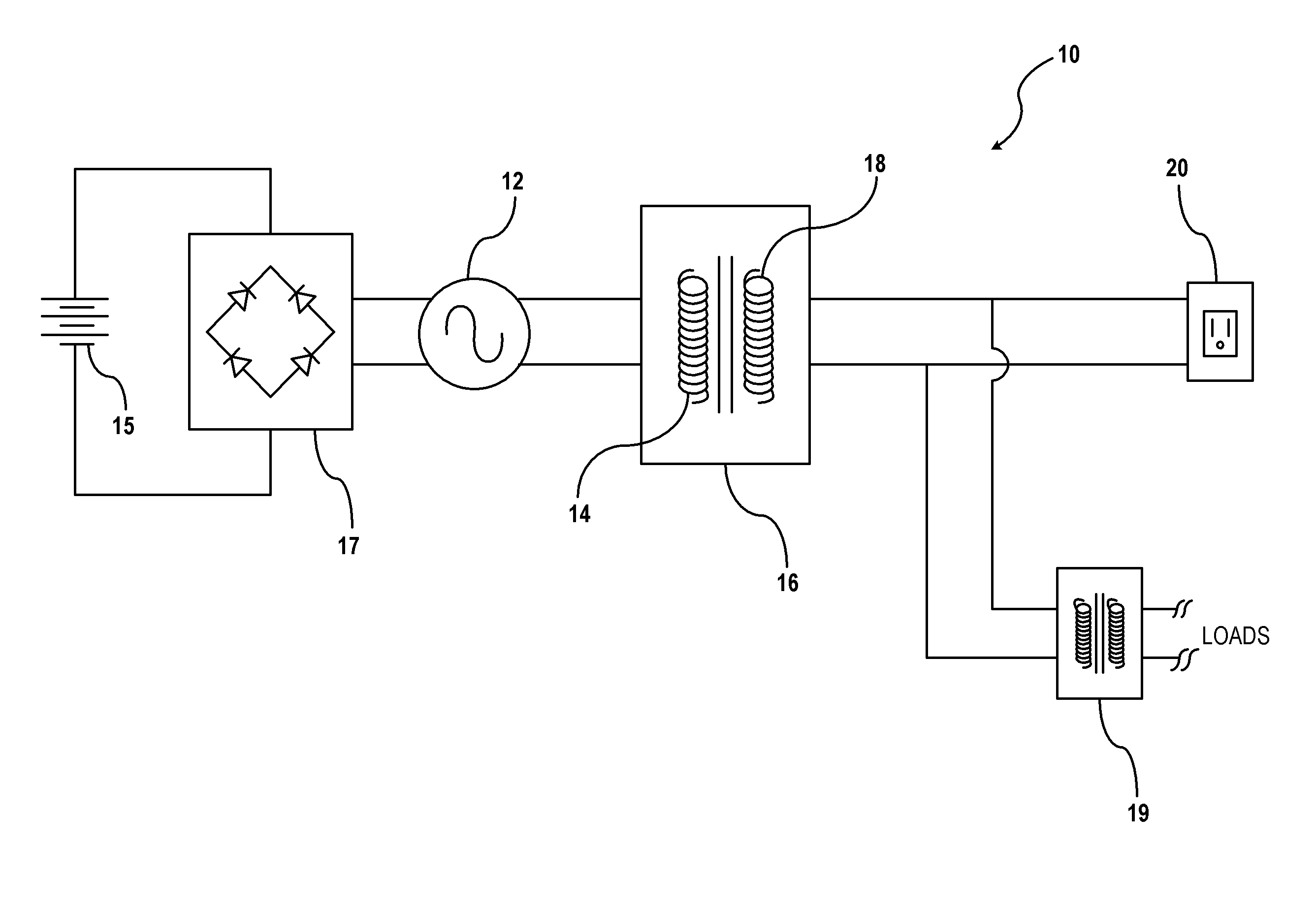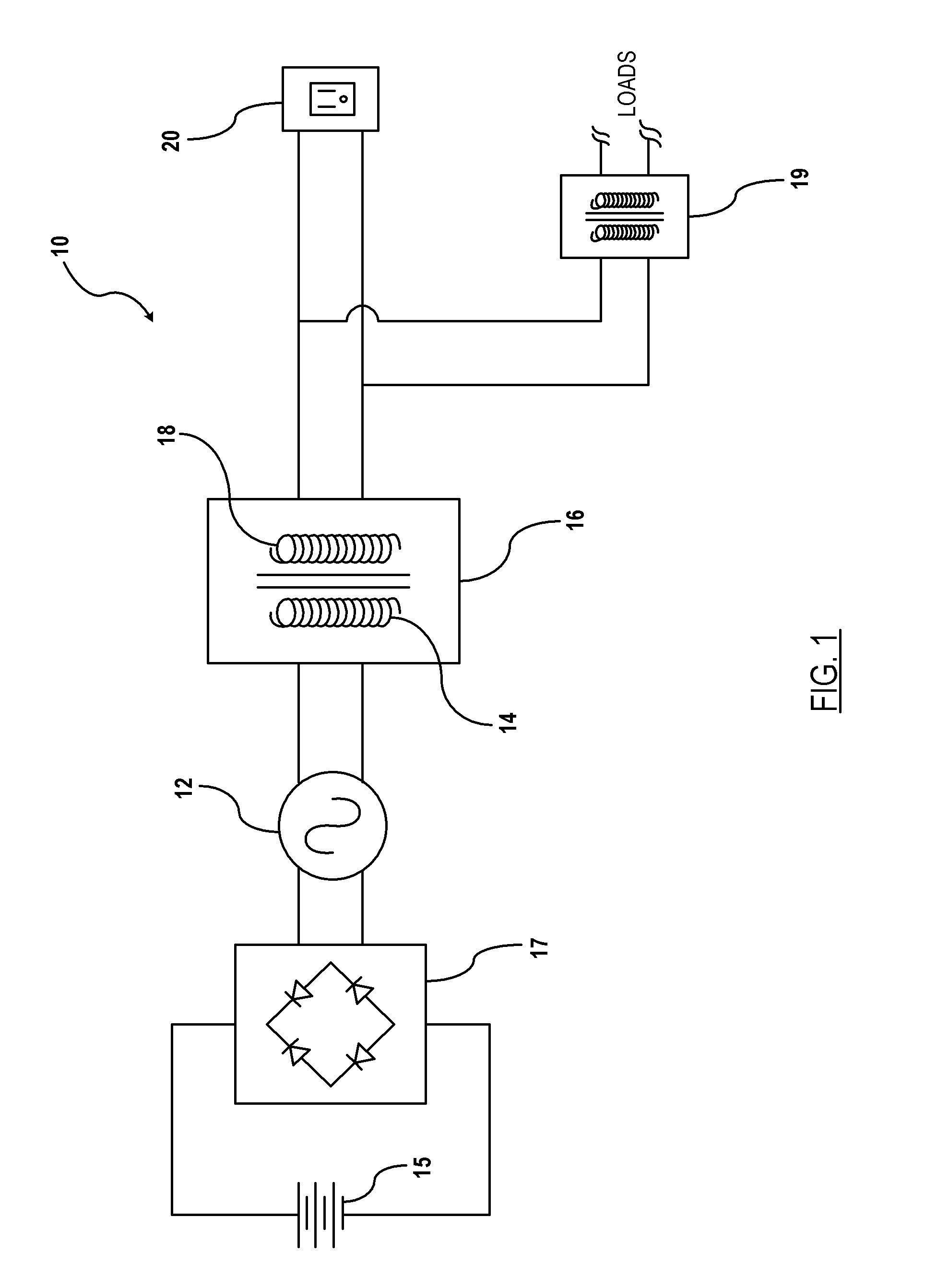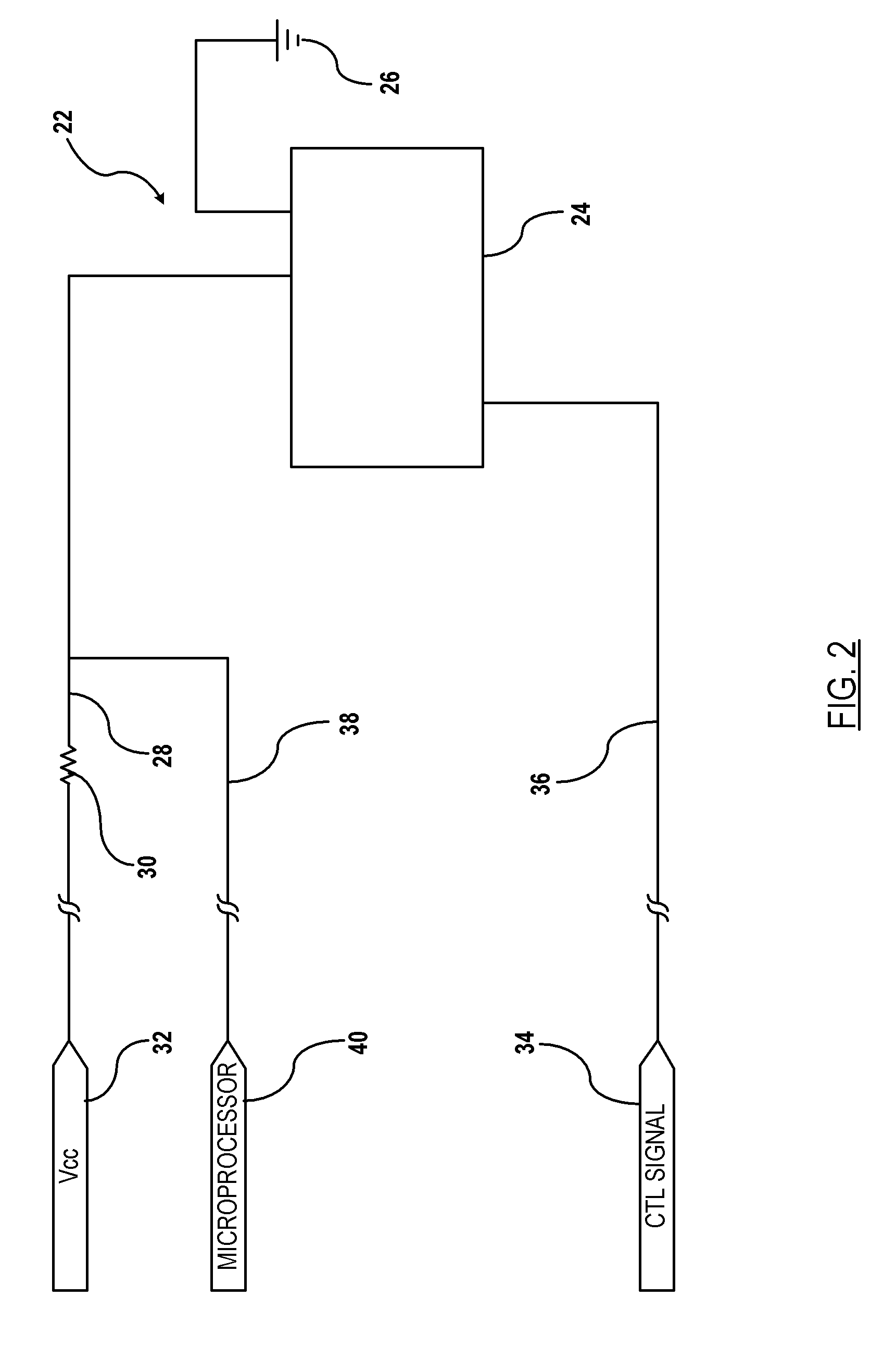Vehicle AC Ground Fault Detection System
- Summary
- Abstract
- Description
- Claims
- Application Information
AI Technical Summary
Benefits of technology
Problems solved by technology
Method used
Image
Examples
Embodiment Construction
[0018]Referring now to the drawings, there is illustrated in FIG. 1 a power supply circuit, shown generally at 10, for increasing the supply voltage to a load device. The power supply circuit 10 includes supply voltage 12 that is provided to a primary coil 14 of a transformer 16. The supply voltage is a low AC voltage (e.g., 12 VAC) converted from DC power source 15. The DC power is converted to the supply voltage via inverter shown generally at 17. The power provided to the primary coil 14 is stepped up to a high AC voltage such as 220 VAC or 400 VAC) at the secondary coil 18. An electrical outlet 20 is coupled to the secondary coil 18 for electrical coupling to an AC-based personal convenience device. The power supply circuit 10 may include one or more additional transformers 19 for stepping down or up the voltage for supplying AC power to various loads 19 throughout the vehicle. The present invention provides a means for detecting an object in contact with a respective phase gene...
PUM
 Login to View More
Login to View More Abstract
Description
Claims
Application Information
 Login to View More
Login to View More - R&D
- Intellectual Property
- Life Sciences
- Materials
- Tech Scout
- Unparalleled Data Quality
- Higher Quality Content
- 60% Fewer Hallucinations
Browse by: Latest US Patents, China's latest patents, Technical Efficacy Thesaurus, Application Domain, Technology Topic, Popular Technical Reports.
© 2025 PatSnap. All rights reserved.Legal|Privacy policy|Modern Slavery Act Transparency Statement|Sitemap|About US| Contact US: help@patsnap.com



